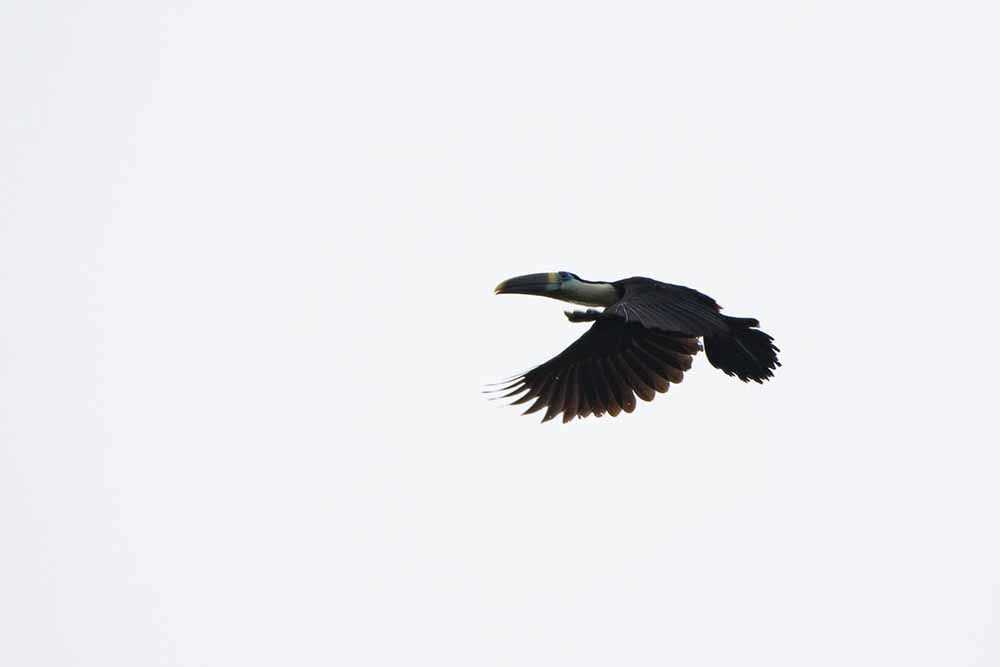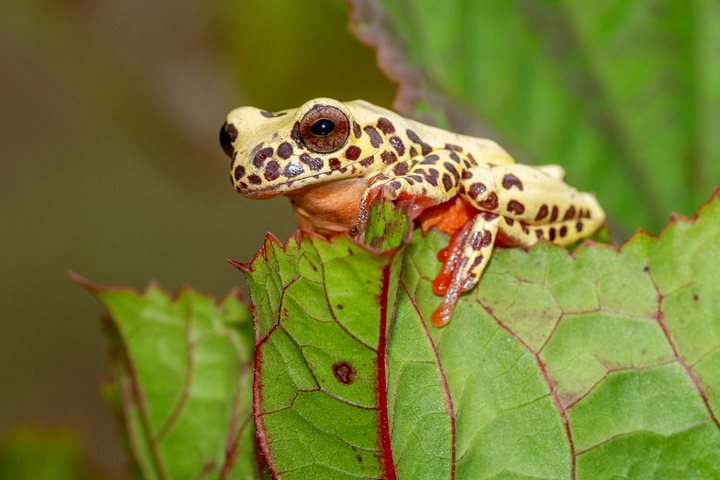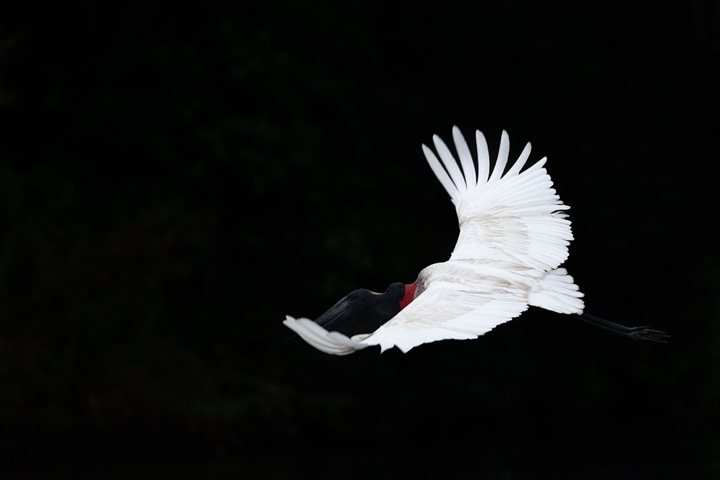This is our first day in the upper Amazon region. In order to get an idea of the area’s colossal size, it’s helpful to know that the Amazon forest is shared by nine countries and contains the largest volume of fresh water on the planet. It consists of both black and white waters, and is home to an immense variety of specimens including birds, mammals, reptiles, and insects, all flourishing in astonishing numbers, sizes, and species.
This morning we had an early pre-breakfast outing to a creek called Pahuachiro. This creek is not too wide, somewhere around 100 feet, but contains a lot of vegetation on both sides. We were in search of large birds and monkeys. Wildlife sightings were higher than expected as we traversed the area. We heard the sounds of monkeys at close range, and it did not take long before we found a troop of saddleback tamarins running along tree branches near the riverside. As we explored more of the creek and surrounding forest, we spotted a harpy eagle. Shortly afterward, we saw toucans flying ahead of us as well as wattled jacanas.
After breakfast, we went off in search of more wildlife. With the help of local guides, we found many interesting animals such as a pink-toed tarantula, a poisonous frog, an anaconda, and the cutest of all, a mother sloth with her baby! What a morning full of surprises.
In the afternoon, we boarded a fleet of skiffs for more exploration along Yanayacu River, a branch of the Marañon River. Here, we found a number of pink and grey dolphins close to the anchorage. The wildlife along the river is amazing. We encountered more sloths, parrots, and above all the landscape made of up of cecropia trees, giant trees, and all the vegetation that make up this vast forest. Along the riverbanks we also explored several small villages and had opportunities to buy beautiful handcrafted items. These friendly communities live off their land, planting crops such as bananas, plantains, cassava, and many other types of fruit.
This is a paradise with so much to offer!







